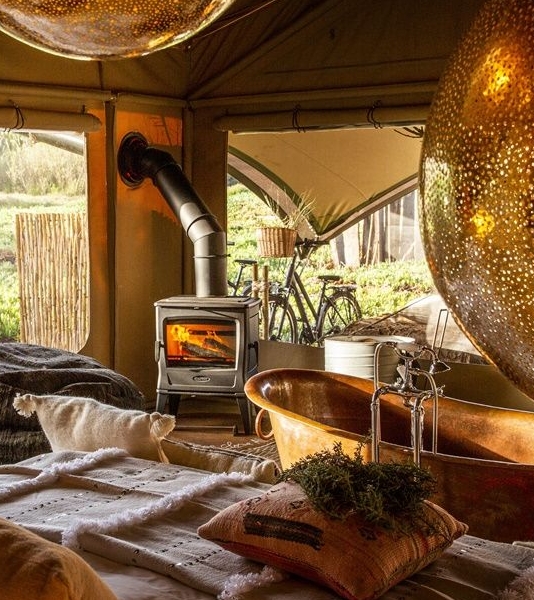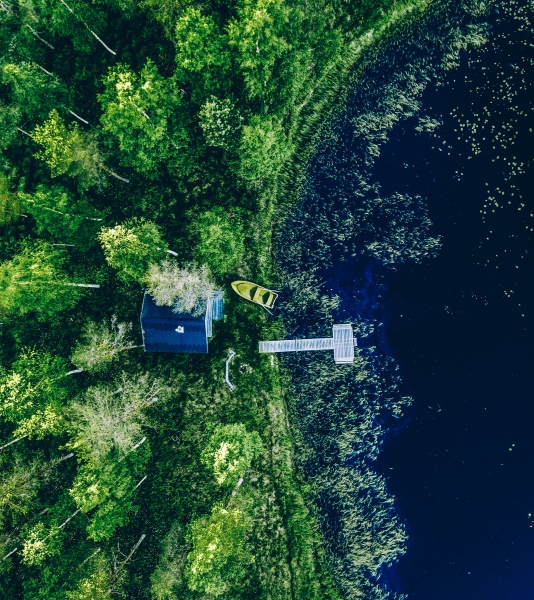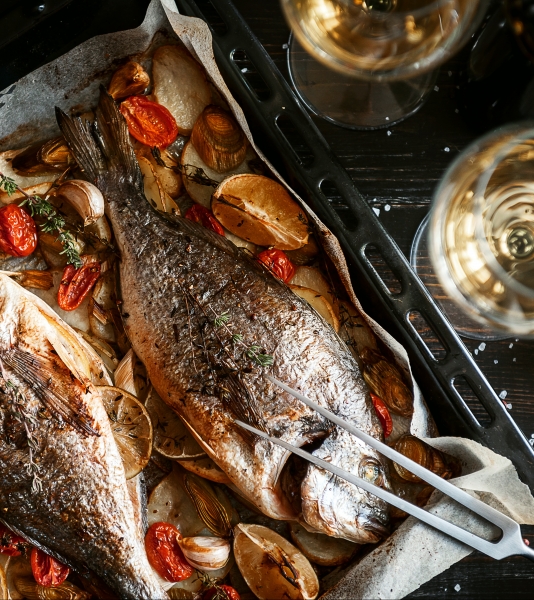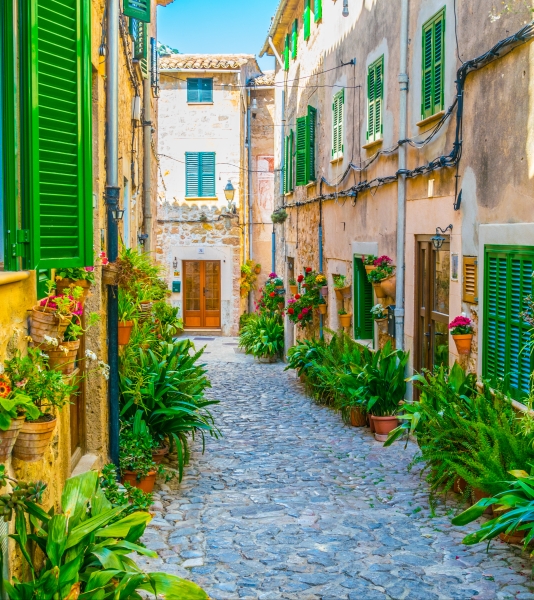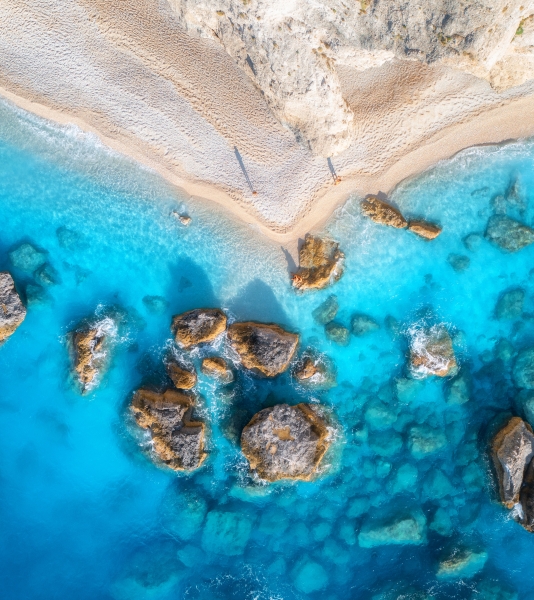Best places to stay in Brittany?
Brittany is the place for explorers: the wild, dramatic coastline, medieval towns and dense forests invite you to go on excursions and voyages of discovery. Our accommodation in this beautiful French region offers the ideal starting point. We have selected the most beautiful small hotels in Brittany and pretty B&Bs for you. You will also find cool holiday flats for the whole family and a curated selection of the best luxury hotels in Brittany.
Our favourite towns, villages and accommodations in Brittany
Choose from our selection of romantic and boutique Brittany hotels by clicking on the map on the right. These will highlight a selection of charming Brittany hotels catering to a wide variety of tastes and budgets, including chateaux, bed & breakfasts as well as luxury Brittany hotels amongst others.
What to see in Brittany
The city of Saint-Malo is located on the so-called Emerald Coast and was long feared in former times, as Saint-Malo was once home to notorious corsairs, i.e. privateers. Today, there is no longer any cause for concern and the city is a great destination for a day trip. The old town within the historic ramparts forms the centrepiece of the city. It is surrounded by the sea on three sides, which gives it a great ambience. You can also take a walk on the massive wall of the fortress and enjoy the panoramic view of the old town, sea and harbour. Why not spend the night in an elegant boutique hotel on the seafront promenade of Saint-Malo?
Visit the oldest seaside resort in Brittany - Dinard - on a tour of Brittany. Also located on the Emerald Coast, very close to Saint-Malo, the town enchants visitors with its time-honoured Art Nouveau villas and fantastic location at the mouth of the Rance. As the seaside resort of Dinard was founded by an English aristocrat in the 19th century, you can still find a little bit of English flair here today and less typical Breton flavour. Dinard is often referred to as the ‘Nice of the North’. We have selected beautiful boutique hotels in Dinard.
There are numerous lighthouses along the coast of Brittany, which are not only a beautiful sight, but also a reminder of the region's history. The coast is also particularly good for sailing. There are numerous sheltered (natural) harbours here and the offshore islands invite you to make a detour. Fishing and diving are also very popular in Brittany.
Concarneau, the ‘blue city’ and home town of Inspector Dupin, is another beautiful destination on our list. Jean-Luc Bannalec's crime novels are therefore suitable reading material during a stay in Concarneau. You should also visit the market hall in Concarneau, where you can find various culinary delights.
Guérande is the centre of salt production in Brittany, which is why you will find extensive salt pans here. Take a guided tour to learn more about the importance and production of fleur de sel in the region. Afterwards, you can stroll through the historic old town of Guérande and buy some lovely souvenirs, such as the regional salt caramel sweets. If you want to explore the surrounding area and the beautiful town of Guérande, to stay in a charming bed & breakfast is the perfect place!
Between bays and pine forests, you will find another jewel of Brittany - Sainte-Marine. Located in the south of Brittany, the town at the mouth of the Odet offers everything you need to relax in a peaceful setting. The pretty Breton harbour of Sainte-Marine invites you to slow down. In keeping with this, we found manor houses on the River Odet that blend in perfectly with the unique landscape.
The coastal town of Douarnenez on the west coast of Brittany has four harbours to offer. Enjoy the lively alleyways with their small workshops and fishermen's houses and the beautiful bay in which Douarnenez lies. The town owes its wealth to fishing in the 19th century, when Douarnenez developed into the sardine stronghold of the region. The town's oldest harbour, Port-Rhu, is also adjacent to the museum harbour, which provides a great insight into the authentic boats and sailing ships that can be seen and visited here. Find artfully decorated boutique hotels in Douarnenez here.
The most beautiful places in Brittany
The landscape of Brittany offers many contrasts and that is what makes it so exciting. The harsh climate, the vastness of the sea, which is even more pronounced due to the influence of the tides, ensure relaxation and a holiday feeling. In the harbour towns you will find many small fishing boats that create a peaceful atmosphere and of course you should try the particularly tasty fresh fish here.
The capital of the region is Rennes. The student city offers more than just pretty half-timbered houses. There are other architecturally beautiful buildings here, such as the Breton parliament or the Champs Libres, the cultural centre. For refreshments, you can stop off at one of the many small cafés or restaurants. Or simply take a relaxing stroll through the pretty alleyways of this atmospheric city. Very close to Rennes, you will also find the small town of Saint-Pierre-de-Plesguen, where we have located an elegant manor house. Above all, enjoy the peace and quiet in Saint-Pierre-de-Plesguen. The town is also a good starting point for excursions to various towns in the neighbourhood, such as Saint-Malo or Dinard.
The ‘Cote de Granit Rose’ is another must-see when visiting Brittany. The granite coast offers fantastic pink rock formations and expressive contrasts of shimmering granite and white sandy beaches. Embedded in the granite coast is the village of Perros Guirec, one of the most beautiful seaside resorts in France. The historic town centre, many small shops and the unique landscape create a particularly atmospheric ambience.
But Brittany doesn't just have a beautiful coastline, the interior also impresses us. Here you will find lush green valleys, forests and rivers. The Montagnes Noires or the hills of Arrée are a great destination for hikers, from where you have a beautiful view of the sea.
For even more nature and an enchanted setting, visit the medieval forest of Brocéliande in the heart of Brittany. A number of legends surround the forest, including the famous Arthurian legend. A hiking trail through the forest leads past numerous famous sites: Trécesson Castle, the House of Viviane and the Tomb of the Giants. The forest is located south-west of Rennes and is listed as the forest of Paimpont, the nearest town.
Gastronomy in Brittany
Crêpes are a staple of Breton cuisine. The wafer-thin pastry is often served with a particularly creative topping: Caramel au beurre salé, roasted almonds, marzipan or various fruits are often used as fillings.
Savoury galettes are often served as a main course. Buckwheat pancakes are another speciality from Brittany. They are mainly filled with a savoury filling of ham, cheese and egg. However, other fillings such as potatoes, salmon, herring, goat's cheese or fig jam are also popular.
You should also try a variety of seafood in Brittany. For example, the Breton lobster, homard à l'armoricaine. This is characterised by its intensely flavoured meat. Excellent mussels and oysters can also be found in the region.
Cider is not a speciality specifically from Brittany, but is nevertheless often drunk with many dishes here. The reason why cider is so popular in Brittany is because the region is unsuitable for growing wine and so an alternative was sought. Cider is also the basis for the classic Kir Breton, a mixed drink made from cider and crème de cassis.
Brittany has delicious cakes and pastries for the sweet tooth. The Kouign Amann cake is another Breton speciality. Its flavour is reminiscent of a croissant. The butter cake made from puff pastry is coated in caramel and is a popular dessert in the region. Far Breton, a Breton pancake, is also often eaten as a sweet lunch. In local bakeries, it is often served with plums or dried apricots.
As nossas coleções
Não sabe para onde ir? Deixe nossas coleções te inspirarem.


